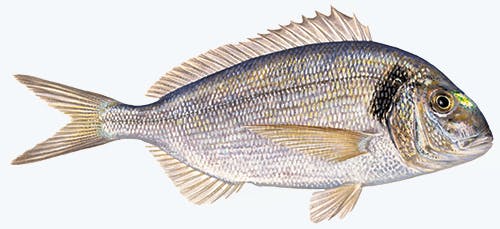All feed formulas developed by Aller Aqua at the Aller Aqua Research Centre follow these requirements to ensure proper growth and health:
Protein Needs: Sea bream are carnivorous with high protein requirements. Their diets typically contain 40-50% crude protein, particularly during juvenile stages to support rapid growth and development. Protein sources usually include fishmeal, fish by-products, and increasingly, sustainable alternatives like insect meal or plant proteins.
Fat and Energy Needs: Lipid content in feed is generally 8-15%, supplying necessary energy and essential fatty acids such as EPA and DHA, crucial for health, immune function, and flesh quality.
Essential Nutrients: A balanced diet for sea bream must include vitamins (A, D, E, C, B-complex), minerals (calcium, phosphorus, selenium, zinc), and essential fatty acids. These nutrients promote growth, reproduction, and disease resistance.
Feed Formulation: Feeds are often pelleted, with floating or slow-sinking characteristics. The formulations aim to optimize digestibility and nutrient absorption, minimize waste, and improve feed conversion ratios (FCR).
